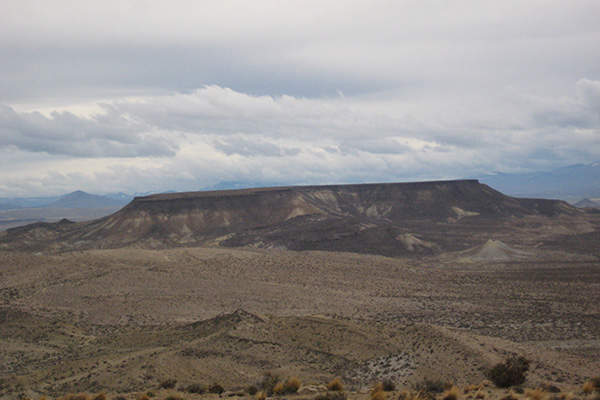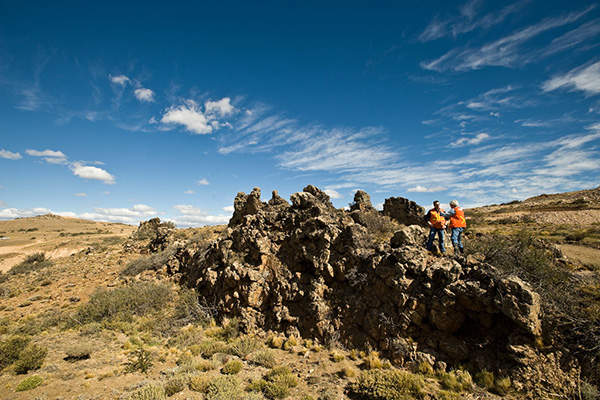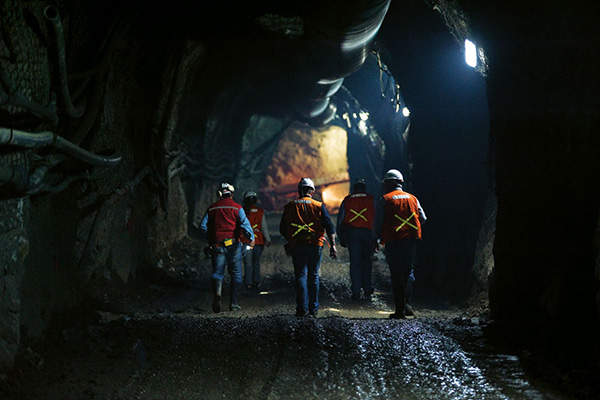The Cerro Negro gold mine located in Santa Cruz, Argentina, is owned and operated by Goldcorp. Construction of the mine began immediately after the approval of environmental impact assessment (EIA) report in December 2011.
Mining at the Eureka deposit of the mine commenced in April and the first gold production was achieved in July 2014, while commercial production was achieved in January 2015. The mine life is expected to be 12 years.
The mine produced 452,000oz of gold in 2017 and is expected to produce 490,000oz of gold in 2018.
Goldcorp employs 1,670 employees and contractors at the gold mine.
Location, geology and mineralisation
The gold mine is located on the low-level Patagonian plains in Santa Cruz, southern Argentina, at an elevation of approximately 600m above sea level.
The property extends over 215km² and comprises numerous high-grade gold and silver vein structures situated near the western margin of the Deseado Massif, a rigid crustal block.
Upper Jurassic volcanic to sub-volcanic sequences of rocks host the veins, while tertiary basalt and ash tuff overlie the Jurassic sequence.
The mine is divided into six zones based on the mineralisation: Eureka Vein, Mariana Central, Mariana Norte, Bajo Negro, San Marcos and the Vein Zone.
Reserves of Cerro Negro gold mine
The mine is estimated to contain proven and probable reserves of 4.86 million ounces (Moz) of gold and 35.69Moz of silver as of June 2017.
The measured and indicated gold resources are estimated to be 1.18Moz and the inferred resources are estimated at 140,000oz, whereas the measured and indicated silver resources are estimated to be 9.17Moz and the inferred resources are estimated at 850,000oz.
Mining
The conventional drill and blast method of mining, followed by load and haul, is applied at the open pit Vein Zone deposit, while the blasthole mining method is applied at the underground Eureka West and the Bajo Negro deposits.
Cerro Moro gold-silver mine is located 70km south-west of the port of Puerto Deseado in Santa Cruz province, Argentina.
Underground development of 7,702m was completed during 2013. The Eureka West deposit is accessed via a decline with a total length of 3,892m, whereas the Bajo Negro deposit is accessed through a 2,840m-long decline.
The mining fleet comprises two boom jumbos, load-haul-dump (LHDs) loaders, 28t trucks, Cat 990 front-end loaders, and 55t capacity Cat 773 trucks.
Ore processing
The processing facility, located north-west of the Vein Zone deposit, initially processed the ore from the Eureka deposit followed by that from Bajo Negro and Vein Zone. The run-of-mine ore is delivered to the primary crusher and transported to the semi-autogenous grinding mill.
The ground material is cyanide leached and undergoes a three-stage counter-current decantation (CCD), solution clarification, zinc precipitation and smelting to produce gold/silver bars. The produced bars are shipped to a refinery for further processing.
The CCD tailings are filtered and washed to recover cyanide, prior to being re-pulped and pumped to the tailings storage facility.
Construction and infrastructure
Power is provided from a new connection station installed at the intersection of roads 43 and 39. A 58km–long, 132kV overhead transmission line was laid from Las Heras to the principal substation at the processing plant.
Access to the mine site is through a new 45km access road, which connects to Provincial Highway 39.
Water supply to the processing plant and other infrastructure is provided from three water bores located in the valley bordering the mine site.
Key players in mine development
NCL Engineering was engaged to develop a mine plan for the underground Eureka West deposit. Ausenco designed the processing plant while Golder Associates conducted the geotechnical work.







